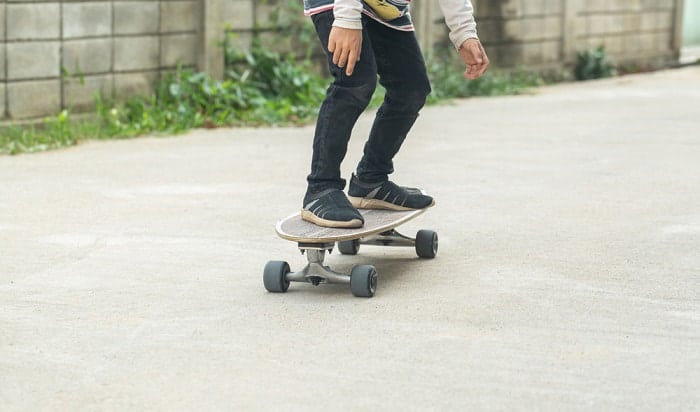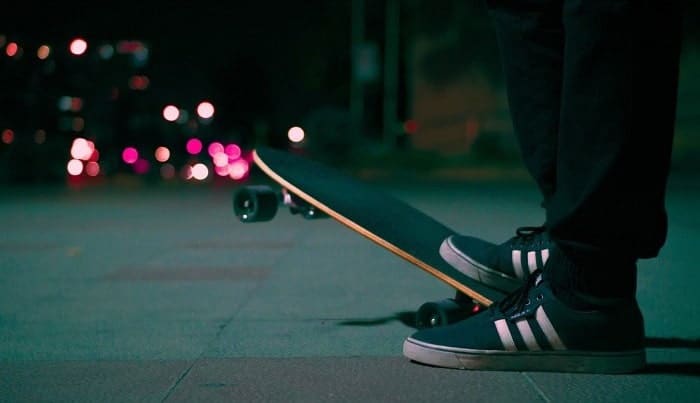The subject of how to pump on a longboard isn’t really addressed all that much, although it is popular among boarders who have discovered it.
Pumping is a method of boosting your skateboard’s speed without taking your feet off the deck. Long distance skaters, cruisers, and slalom skateboarders use this approach. To pump on a longboard, you swing aggressively from left to right. The quicker you accomplish this, the faster the front truck will turn.
Increasing your speed in this manner provides you with some forward momentum. In fact, pumping allows riders to travel a pretty long distance without pushing. For long-distance skaters, taking a pause without losing momentum is simple.
Table of Contents
What Longboard Works Best for Pumping
The rhythm of the pumping procedure is the main thing to keep in mind. It’s not too tough to learn how to move the body. It’s possible to pump the longboard with good technique, but excellent technique alone will not allow for adequate pumping unless the pumping longboard is set up properly.
1. Start with a short wheelbase and a short deck with a top mount
A short wheelbase is easier to pump with; it makes for tighter turns, which lead to faster pumping. Long wheelbases, on the other hand, make wide turns. On top of that, the shorter wheelbase provides easier and more comfortable riding for the beginning riders.
As for the deck, I recommend choosing one that’s not too long. Long decks are often too weighty, which makes pumping difficult.
In addition, pick top-mount decks. They put you in the position of having the most control over your vehicle, and each swing has the ability to make it turn entirely left or right. Remember to avoid wheel bite at all costs!
2. The larger the wheels, the better; square-lipped wheels are preferable
When it comes to wheel size, anything bigger than 70mm is superior. Such wheels keep up their momentum, allowing you to build up speed. With the correct vehicle, it is possible to utilize wheels 85mm in size. Wheel bite may occur, however, if top mounts are used.
Finally, you should choose square-lipped wheels with sticky treads. With these sorts of wheels, you won’t have to worry about your traction sliding while carving in. They let you exit each carve while maintaining your top speed.
Circular-lip wheels have a tendency to reduce traction. If they drift out (which can happen), you’ll lose your speed. Sliding is the worst case in this scenario, because it can make you lose your balance and tumble. Therefore, it’s important to be cautious when using them.
3. Narrow trucks for ease and moderate speeds; broad trucks for high speeds
As long as the trucks are used to pump, they are all effective.
Generally speaking, when narrower pumping trucks are used for pumping, they are easier to turn and maintain a moderately speedy rate. While broader trucks can be employed, you would need more effort to turn properly. On the other hand, they go faster so you can continue running for a while.
Tutorial of Pumping on a Longboard
Before doing the pump, you should learn the Tic-Tac. The Tic-Tac is a momentum-building technique accomplished by swinging the tip of your deck back and forth from left to right and vice versa. By repeating this action, forward propulsion and acceleration are generated.
To begin practicing the motion, pick up your skateboard and set it down on grassy terrain. The objective is to train your muscle memory prior to performing it on the fly.
Once you’re used to the Tic-Tac, learn the pumping technique on a shortened longboard. The skateboard deck should be loosely mounted with softer bushings. Trucks that don’t turn well and hard bushings will slow your progress.
The first thing to do is to get a little momentum going by pushing down on the board. Begin turning with your front leg by putting pressure on the front rail and pressing your back foot onto the board while doing so. In this fashion, alternate taking turns with each leg while maintaining good balance.
You will learn to build up momentum for carving when you practice with your longboard pumping setup in a broad area.
Why Should You Learn to Pump
It is tough to learn to pump on your longboard, but once you do it frequently, you can keep the momentum going for miles on end with significantly less energy expended than you would if you were pushing. This is due to a wavy motion that revolves around your hips.
Pushing long rides is generally tiring and time-consuming, which is why long-distance pumping on the appropriate setup is usually more efficient and less fatiguing. When pumping, your constant body mobility maintains a steady pace; whereas when employing pushing, your board abruptly loses velocity between kicks.
The benefits of pumping include a complete and balanced workout that any other type of exercise cannot match. While foot-pushing does include using your core abdominal and leg muscles, longboard users are more likely to push with the same leg, which can lead to muscular irregularities.
Conclusion
Pumping is a fresh concept to explore if you’re just getting started with a longboard. Long distance riders who want to attain the longest and most efficient rides often incorporate the techniques of pushing and pumping.
The basic concept of pumping lies in the design of the trucks, the flexibility of the deck, and the soft wheels. Of course, the appropriate body movements and rhythm are also essential for the technique. I hope you have gained knowledge on how to pump on a longboard and the perks of doing the skill.

I am Michael, and I have been enjoying this fun sport for seven years. And nothing is better than having a community to share our passion for those thrilling tricks. I am ready to tell you all I know about skateboarding, showing you how to choose a good board and trick to start and how the practice goes. Stay tuned!




